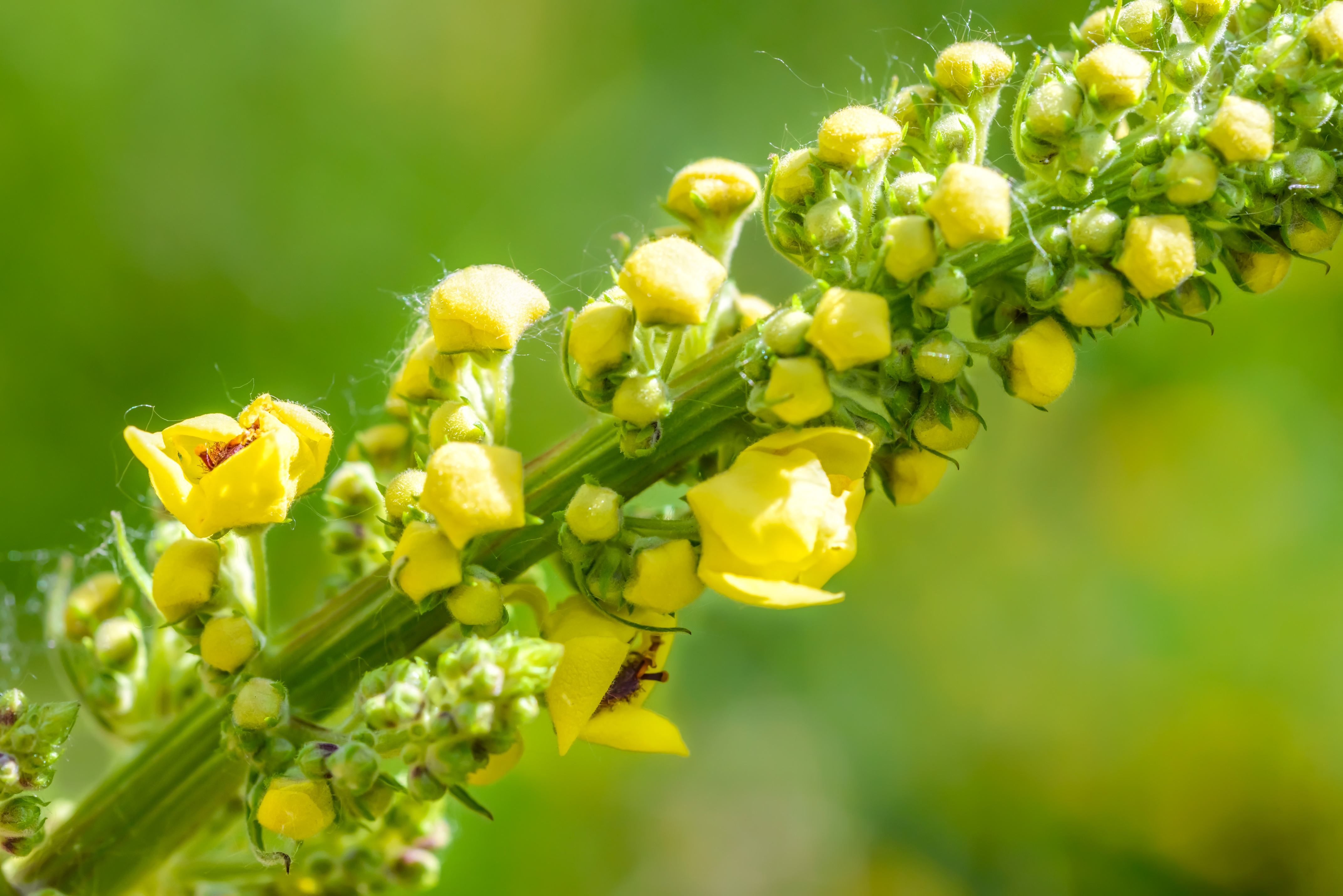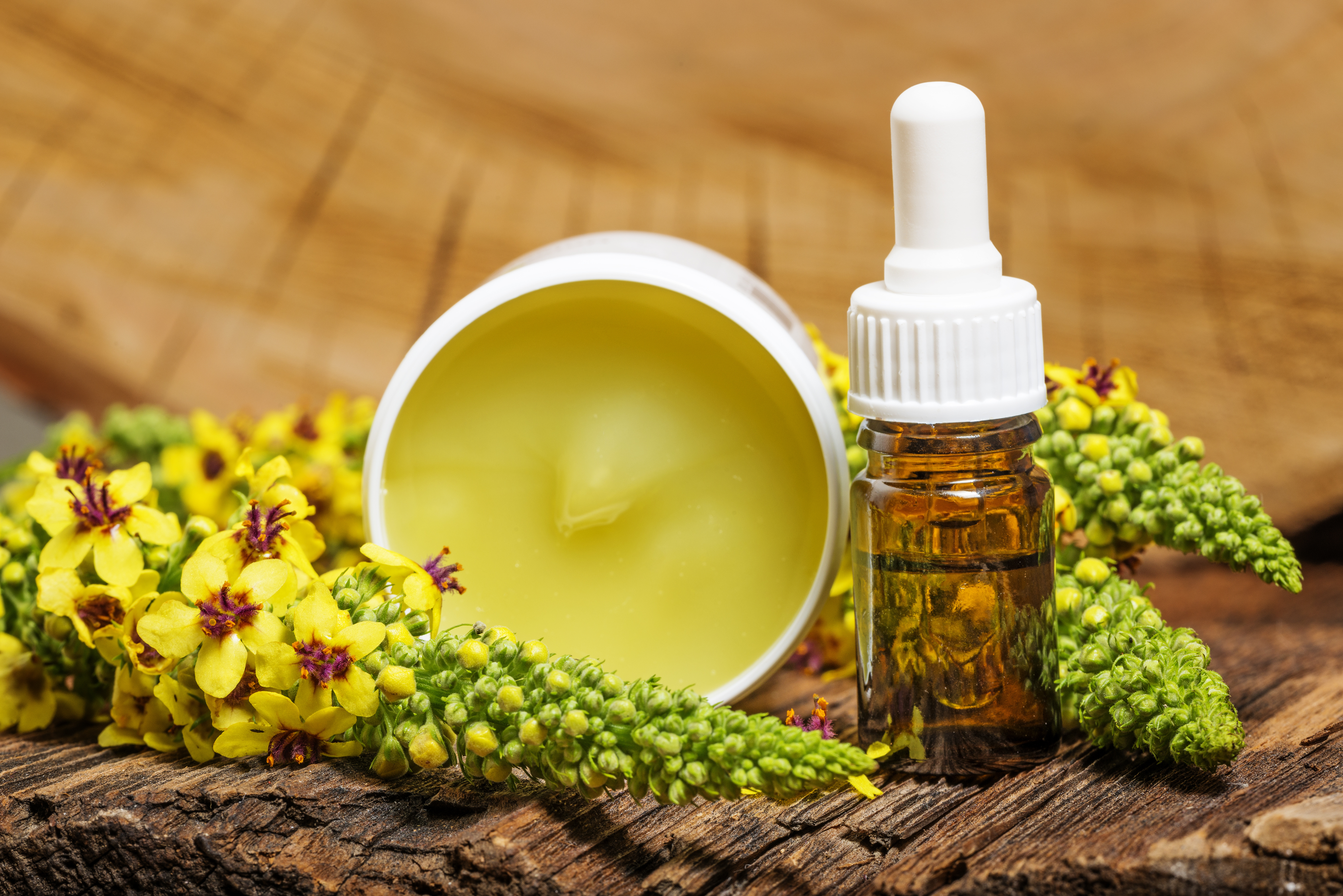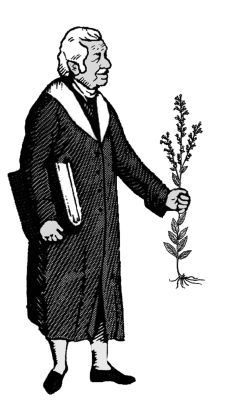Great Mullein
Published: Wed, 04/19/17
April 19, 2016
Great Mullein Jo Francks, M.H., CCII
 Once you’ve seen mullein growing and you know what it looks like you will be able to spot it anywhere. It has velvety, long leaves that form a rosette the first year of growth. The second year it sends up a stalk that grows up to eight feet high with leaves attached and at the top the small
yellow flowers bloom and grow. You rarely see one plant. Mullein likes to grow in dry rocky soil in open areas with many other plants for company. If you go back to find the mullein you picked a couple years ago you may not find it because it moved locations on you. It’s a biannual plant so after the second year it dies and leaves a dry stalk. The seeds will be scattered to grow somewhere else.
Once you’ve seen mullein growing and you know what it looks like you will be able to spot it anywhere. It has velvety, long leaves that form a rosette the first year of growth. The second year it sends up a stalk that grows up to eight feet high with leaves attached and at the top the small
yellow flowers bloom and grow. You rarely see one plant. Mullein likes to grow in dry rocky soil in open areas with many other plants for company. If you go back to find the mullein you picked a couple years ago you may not find it because it moved locations on you. It’s a biannual plant so after the second year it dies and leaves a dry stalk. The seeds will be scattered to grow somewhere else.
I was at track practice the other day and one of the boys found a small mullein sprout and plucked it out of the ground. He was excited about it and was telling the other kids how it is a cure for stinging nettle. When I saw him with it I told him it’s also good for the lungs and that he could use it if he had a cold or a cough. His expression changed and he asked if it would help his asthma. I assured him it could and his eyes got big and excited. He looked as if he had found a pot of
gold. When the world of plant medicine is opened to someone they have found a great treasure.
Mullein is known to be a wonder plant for the lungs. It acts as an expectorant and is soothing and helps get phlegm out of the lungs. This can be done by drinking the tea (1 ounce dry leaves in a pint of boiling water, steep 20 minutes and drink ½ cup every hour), or simmering the leaves in water on the stove and breathing in the steam with a towel draped over your head. Use a cup of dried leaves in a quart of water and bring to a low boil. Its astringent properties help to dry up the
cough.
Dr. Christopher combined 3 parts mullein with 1 part lobelia to make his famous glandular formula. This formula has been used as a fomentation for mastitis, swollen glands in the neck, swollen and crushed testicles, tonsillitis, mumps and many other ailments.
When Dr. Christopher was visiting a friend in the hospital a man who knew who he was came up to him and asked for help. He was bleeding from the bowels and had to receive blood transfusions from the loss of so much blood. The man came to Dr. Christopher’s office and went immediately to the bathroom because the blood flowing down into his bowel made him feel that he had to have a bowel movement. While he was there, Dr. Christopher called on the intercom into the herb lab, “Fix me a
cup of tea right quick. This will be one ounce of mullein to a pint of whole milk.” A shout came over the intercom, “MILK?!” They knew that Dr. Christopher recommended the use of no dairy products in the mucusless diet. Dr. Christopher told them, “This is medicinal.” They raced out and got some from a store. They made it into a tea, ready by the time the gentleman came out of the bathroom. Dr. Christopher had him drink the whole pint down. It was warm and had been
strained. After he drank the whole pint, Dr. Christopher said, “That’s the whole program. Every time you feel like you have a bowel movement, which could be blood, go have the bowel movement and then drink immediately after that a pint of the mullein tea made with milk. The next day, just take it three times a day and then once a day for three days. As time goes on, you’ll find that you have fewer of these bowel movements. That’s it.” After a few days the man came
bouncing in and told Dr. Christopher that he was all clear and was overjoyed.
Milk was used in this program because it has a high casein content. It is extremely sticky, gluey and hard to digest. The casein glues the mullein right to the hemorrhaging area. Milk does the same for ulcer patients, gluing or painting over the affected area for temporary relief.
Mullein is anti-viral and can be used for herpes, shingles, Epstein Barr and other viral infections. It is anti-inflammatory and is used for joint and muscle pain. Mullein flower oil is used to relieve earaches. It has a mild narcotic effect without being habit forming or poisonous. It has no known toxicity. Mullein helps calm inflamed and irritated nerves and helps induce sleep.
Jo Francks works at the School of Natural Healing as a Student Adviser and Master Herbalist. She is a certified Iridology instructor through the International Iridology Practitioners Association (IIPA) and a Quantum Touch Practitioner.
Printable Version: http://herballegacy.com
If you missed an article be sure to visit http://www.herballegacy.com and click on Articles. Also, take advantage of David Christopher's Radio Show (see Resource Links below for more information).
The Master Herbalist Certification Seminar is quickly approaching and will be held June 19th through the 24th. If you are in the Advanced section of your Master Herbalist studies and would like more information please contact us at the School of Natural Healing at 1-800-372-8255 or you can find more information at the following link: http://www.seminar.schoolofnaturalhealing.com/
David Christopher is now on Twitter!
You can follow David @DChristopherMH
 1 or 2 ounces of fresh mullein flowers (use tweezers to pick the flowers as to not contaminated them)
1 or 2 ounces of fresh mullein flowers (use tweezers to pick the flowers as to not contaminated them)Sufficient olive oil to cover the flowers
A fresh chopped garlic clove can be added but is optional. This will add antibiotic properties to the oil.
Put the fresh flowers into a clean glass jar. Add the chopped garlic if desired. Cover with olive oil. Use a piece of nylon or muslin cloth to cover the jar with a rubber band around it. Let the jar steep in a warm place for 2 weeks and strain the oil through muslin cloth or filter paper. Store in a cool place.
Use a dropper to apply to each ear. Use 2 to 5 drops depending on the size of the ear 3 or 4 times a day.
Note: I keep the dropper separate from the jar the oil is stored in. When ready to use get some of the oil in the dropper and run under warm water to warm up the oil before inserting into the ear. This is used for ear aches and inflammation, excessive wax in the ears and hearing loss. It can be taken internally for parasites, 1 tsp. 3 times a day.
Recipe by Jo Francks
Printable Version: http://herballegacy.com
Herbal Resource Links
- Herbal Legacy - http://www.herballegacy.com - Our free information website
- The School of Natural Healing - http://www.snh.cc - Quality Education since 1953
- Christopher Publications - http://www.christopherpublications.com - Dr. Christopher's books and more
- Christopher Websites - http://www.christopherwebsites.com - Find all Christopher websites and other great resources
- A Healthier You Radio Show - http://www.ahealthieryouradio.com - Free weekly radio show
The School of Natural Healing: http://www.snh.cc
Christopher Publications: http://www.christopherpublications.com
NOTICE: All information in this newsletter is given out as information only and is not intended to diagnose or prescribe. For our official Disclaimer, Biological Individuality, Important Notice & Terms of Use please see: http://www.herballegacy.com/Disclaimer.html
This newsletter is sent by permission only - you can unsubscribe quickly and easily by clicking the link below.
.

